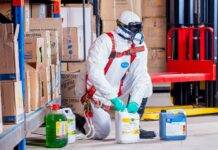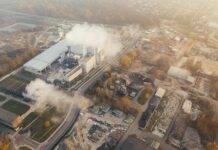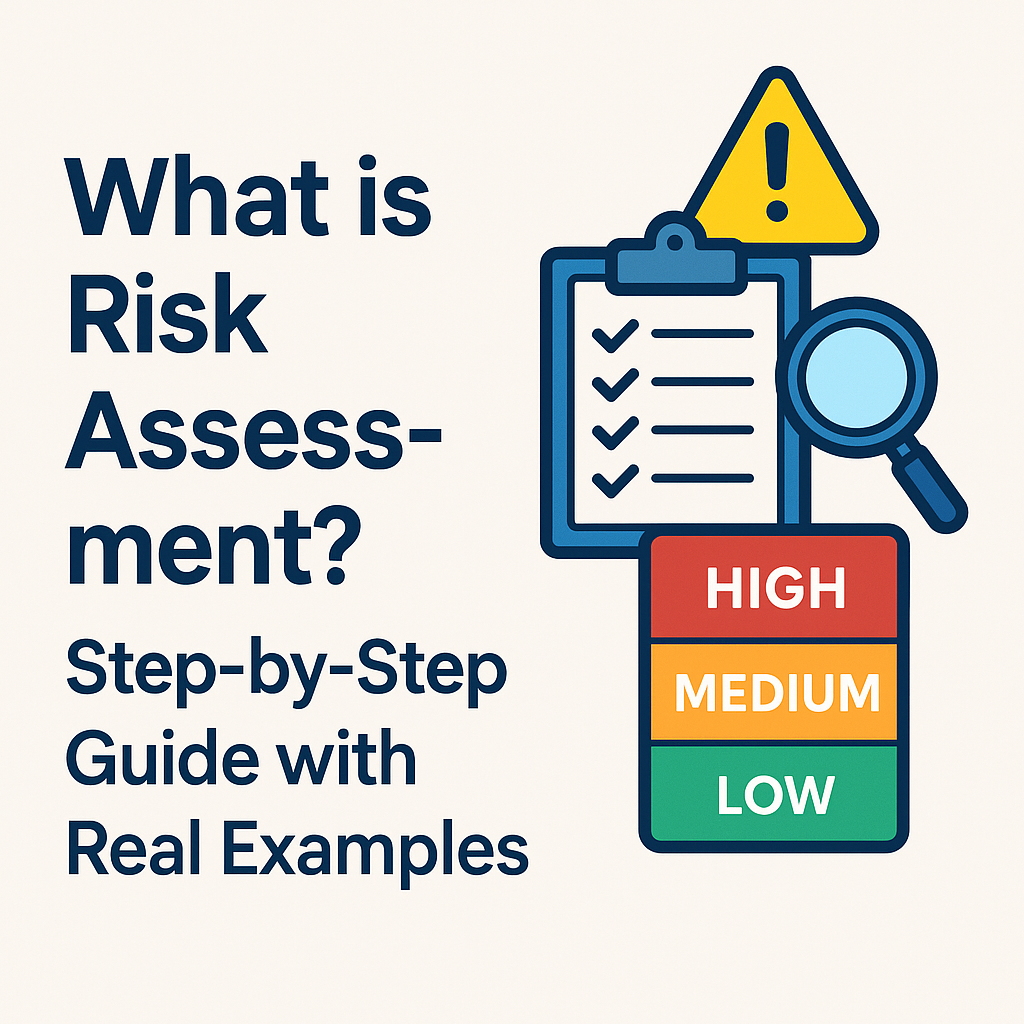
Chemical Engineering Safety Incidents: Understanding Risks and Prevention
Chemical engineering safety incidents pose significant risks to both human lives and the environment. These incidents can result from a variety of factors, including human error, equipment malfunction, and failure to follow safety protocols. In this article, we will delve into the common types, causes, and impacts of chemical engineering safety incidents, as well as explore preventive measures, regulatory frameworks, and future trends in enhancing safety.
Introduction to Chemical Engineering Safety Incidents
Chemical engineering safety incidents encompass a wide range of accidents and mishaps that occur during the handling, processing, or transportation of chemicals and hazardous substances. These incidents can have severe consequences, including injuries, fatalities, environmental damage, and financial losses. Ensuring safety in chemical engineering is paramount to protecting lives, property, and the environment.
Common Types of Chemical Engineering Safety Incidents
Chemical Spills and Leaks
Chemical spills and leaks occur when hazardous substances are released into the environment due to equipment failure, human error, or natural disasters. These incidents can contaminate soil, water, and air, posing health risks to humans and wildlife.
Fires and Explosions
Fires and explosions are among the most catastrophic types of chemical engineering safety incidents. They can result from the improper handling of flammable materials, equipment malfunction, or ignition sources. These incidents often lead to extensive property damage and casualties.
Equipment Failure
Equipment failure, such as leaks in storage tanks or malfunctioning valves, can contribute to chemical engineering safety incidents. Regular maintenance and inspection are essential for preventing such failures and ensuring the integrity of equipment.
Exposure to Hazardous Substances
Exposure to hazardous substances, either through inhalation, ingestion, or skin contact, can result in acute or chronic health effects. Proper handling and storage of chemicals, along with the use of personal protective equipment, are crucial for minimizing the risk of exposure.
Causes of Chemical Engineering Safety Incidents
Chemical engineering safety incidents can be attributed to various factors, including:
Human Error
Human error, such as negligence, fatigue, or lack of training, is a leading cause of safety incidents in chemical engineering. Implementing robust training programs and promoting a culture of safety can help mitigate the risk of human error.
Equipment Malfunction
Malfunctioning equipment or inadequate maintenance can lead to safety incidents, such as leaks, spills, or fires. Regular inspections and preventive maintenance are essential for identifying and addressing potential issues before they escalate.
Lack of Proper Training
Insufficient training and awareness among workers can contribute to safety incidents in chemical engineering. Providing comprehensive training on hazard recognition, emergency response, and safe work practices is essential for reducing the risk of accidents.
Failure to Follow Safety Protocols
Ignoring safety procedures and protocols can increase the likelihood of incidents occurring. Strict adherence to safety guidelines, along with effective supervision and enforcement, is critical for maintaining a safe work environment.
Impact of Chemical Engineering Safety Incidents
Chemical engineering safety incidents can have far-reaching consequences, including:
Human Casualties and Injuries
Safety incidents can result in injuries, illnesses, and fatalities among workers and nearby communities. The physical and psychological toll of such incidents can be significant and long-lasting.
Environmental Damage
Chemical spills and releases can contaminate soil, water bodies, and air, causing harm to ecosystems and wildlife. Cleaning up and remedying environmental damage can be costly and challenging.
Financial Losses
Safety incidents can lead to significant financial losses for companies, including cleanup costs, regulatory fines, litigation expenses, and damage to assets and infrastructure.
Reputational Damage to Companies
Public perception and trust in a company can be severely impacted by safety incidents, leading to reputational damage and loss of business opportunities. Rebuilding trust and credibility may take years of concerted effort.
Preventive Measures and Safety Protocols
To mitigate the risk of chemical engineering safety incidents, the following preventive measures and safety protocols should be implemented:
Risk Assessment and Management
Conducting thorough risk assessments to identify potential hazards and implementing measures to mitigate risks is essential for preventing incidents.
Proper Training and Education
Providing comprehensive training and education to workers on safety procedures, hazard recognition, and emergency response can help prevent accidents and injuries.
Regular Equipment Maintenance
Implementing a proactive maintenance schedule and conducting regular inspections of equipment and facilities can help identify and address potential issues before they escalate.
Implementation of Safety Regulations and Standards
Adhering to relevant safety regulations and industry standards, such as those set forth by OSHA and EPA, is crucial for ensuring compliance and minimizing risks.
Case Studies of Notable Chemical Engineering Safety Incidents
Bhopal Gas Tragedy
The Bhopal Gas Tragedy, one of the worst industrial disasters in history, occurred in 1984 when toxic gases leaked from a pesticide plant in Bhopal, India, resulting in thousands of deaths and injuries.
Chernobyl Disaster
The Chernobyl Disaster, a catastrophic nuclear accident that occurred in 1986 at the Chernobyl Nuclear Power Plant in Ukraine, resulted in widespread radioactive contamination and long-term health effects.
Deepwater Horizon Oil Spill
The Deepwater Horizon Oil Spill, one of the largest marine oil spills in history, occurred in 2010 when an offshore drilling rig exploded in the Gulf of Mexico, causing environmental devastation and economic losses.
Role of Technology in Enhancing Chemical Engineering Safety
Advances in technology play a crucial role in enhancing chemical engineering safety. Some key technological solutions include:
Use of Automation and Robotics
Automating hazardous tasks and processes can reduce the risk of human error and minimize exposure to dangerous environments.
Advanced Monitoring Systems
Installing advanced monitoring systems, such as sensors and detectors, can provide real-time data on environmental conditions and potential hazards.
Virtual Reality for Training Simulations
Utilizing virtual reality (VR) technology for training simulations allows workers to practice safety procedures in a realistic and immersive environment, enhancing their preparedness for emergency situations.
Regulatory Framework for Chemical Engineering Safety
Various regulatory agencies and standards organizations play a role in ensuring chemical engineering safety, including:
OSHA (Occupational Safety and Health Administration)
OSHA sets and enforces workplace safety standards to protect workers from occupational hazards, including those related to chemical engineering.
EPA (Environmental Protection Agency)
The EPA regulates the use, storage, and disposal of hazardous substances to protect human health and the environment from the risks associated with chemical engineering activities.
International Safety Standards and Conventions
International organizations, such as the International Labour Organization (ILO) and the United Nations (UN), establish safety standards and conventions to promote global cooperation and harmonization in chemical engineering safety.
Corporate Responsibility and Ethical Considerations
Companies have a responsibility to prioritize safety and ethical considerations in their operations, including:
Corporate Accountability for Safety
Companies must prioritize safety over profits and invest in measures to protect workers, communities, and the environment from the risks associated with chemical engineering activities.
Ethical Implications of Prioritizing Safety over Profits
Balancing the need for profitability with ethical considerations regarding safety is essential for fostering a culture of responsibility and sustainability in the chemical industry.
Chemical engineering safety incidents can encompass a wide range of accidents, mishaps, or emergencies that occur within chemical plants, laboratories, or other facilities where chemical processes are carried out. These incidents can vary in severity, from minor spills or leaks to major explosions or toxic releases, and they can have serious consequences for both human health and the environment.Some common types of chemical engineering safety incidents include:- Chemical spills or leaks: Accidental release of hazardous chemicals due to equipment failure, human error, or improper handling can lead to contamination of soil, water, or air, posing risks to nearby communities and ecosystems.
- Fire and explosions: Chemical processes often involve flammable or reactive materials, making them susceptible to fires and explosions if not properly controlled. This can result in injuries, fatalities, and extensive damage to equipment and infrastructure.
- Toxic gas releases: Unintended release of toxic gases, such as hydrogen sulfide or chlorine, can cause respiratory problems, chemical burns, or even fatalities for workers and nearby residents.
- Equipment failures: Malfunctioning or inadequate equipment, such as pressure vessels, piping, or safety systems, can lead to accidents like ruptures, leaks, or over-pressurization, with potentially catastrophic consequences.
- Chemical reactions gone wrong: Unexpected reactions or runaway reactions due to improper mixing, overheating, or contamination can produce hazardous byproducts, release energy, or generate pressure beyond the system’s capacity, resulting in accidents.
- Human error: Mistakes in following safety procedures, inadequate training, or complacency can contribute to safety incidents by increasing the likelihood of accidents or compromising the effectiveness of safety measures.
- Environmental contamination: Chemical spills or emissions can harm the environment by polluting water bodies, contaminating soil, or releasing pollutants into the atmosphere, affecting ecosystems and biodiversity.
- Health hazards: Exposure to hazardous chemicals or their byproducts can pose acute or chronic health risks to workers and nearby communities, leading to respiratory problems, skin irritation, neurological disorders, or other adverse health effects.
Preventing and mitigating chemical engineering safety incidents requires a combination of engineering controls, safety protocols, training, and regulatory oversight to minimize risks and ensure the safe operation of chemical processes. Continuous improvement in safety practices, hazard identification, and risk management is essential to prevent accidents and protect both human health and the environment.Conclusion
Chemical engineering safety incidents pose significant risks to human health, the environment, and economic stability. By understanding the common types, causes, and impacts of these incidents, as well as implementing preventive measures and safety protocols, companies can minimize risks and ensure the well-being of workers and communities. Embracing technological advancements, adhering to regulatory frameworks, and promoting corporate responsibility are essential for fostering a culture of safety and sustainability in the chemical industry.
Chemical Hygiene in Laboratories: Promoting Safe Handling and Storage Practices
Chemical Handling: Storage and Personal Protective Equipment (PPE)
Chemical Exposure Monitoring: Air Sampling and Analysis
Chemical Spill Response: Containment and Cleanup
Hazardous Materials Transportation: Compliance and Emergency Response
FAQs
- What are some common causes of chemical engineering safety incidents? Common causes include human error, equipment malfunction, lack of proper training, and failure to follow safety protocols.
- How do chemical spills and leaks impact the environment? Chemical spills and leaks can contaminate soil, water, and air, posing risks to ecosystems, wildlife, and human health.
- What role does proper training play in preventing safety incidents in chemical engineering? Proper training enhances workers’ awareness of hazards, improves their ability to respond to emergencies, and reduces the likelihood of accidents.
- Can technology completely eliminate the risk of safety incidents in chemical engineering? While technology can mitigate risks, eliminating the risk of safety incidents entirely is unlikely. However, technological advancements can significantly enhance safety measures and reduce the frequency and severity of incidents.
- What are some ethical considerations in prioritizing safety over profits in the chemical industry? Ethical considerations include balancing the need for profitability with the responsibility to protect workers, communities, and the environment from harm.
























